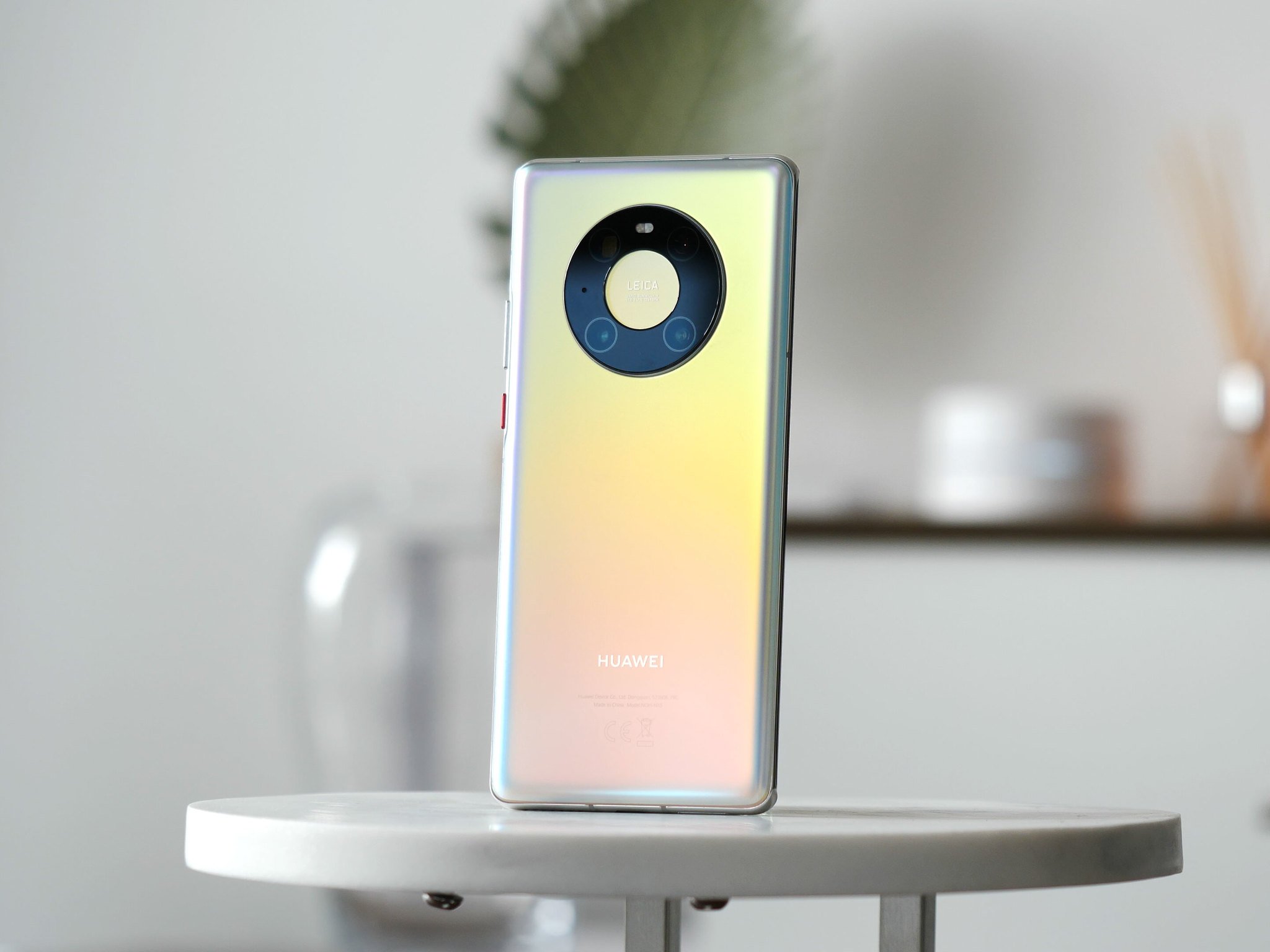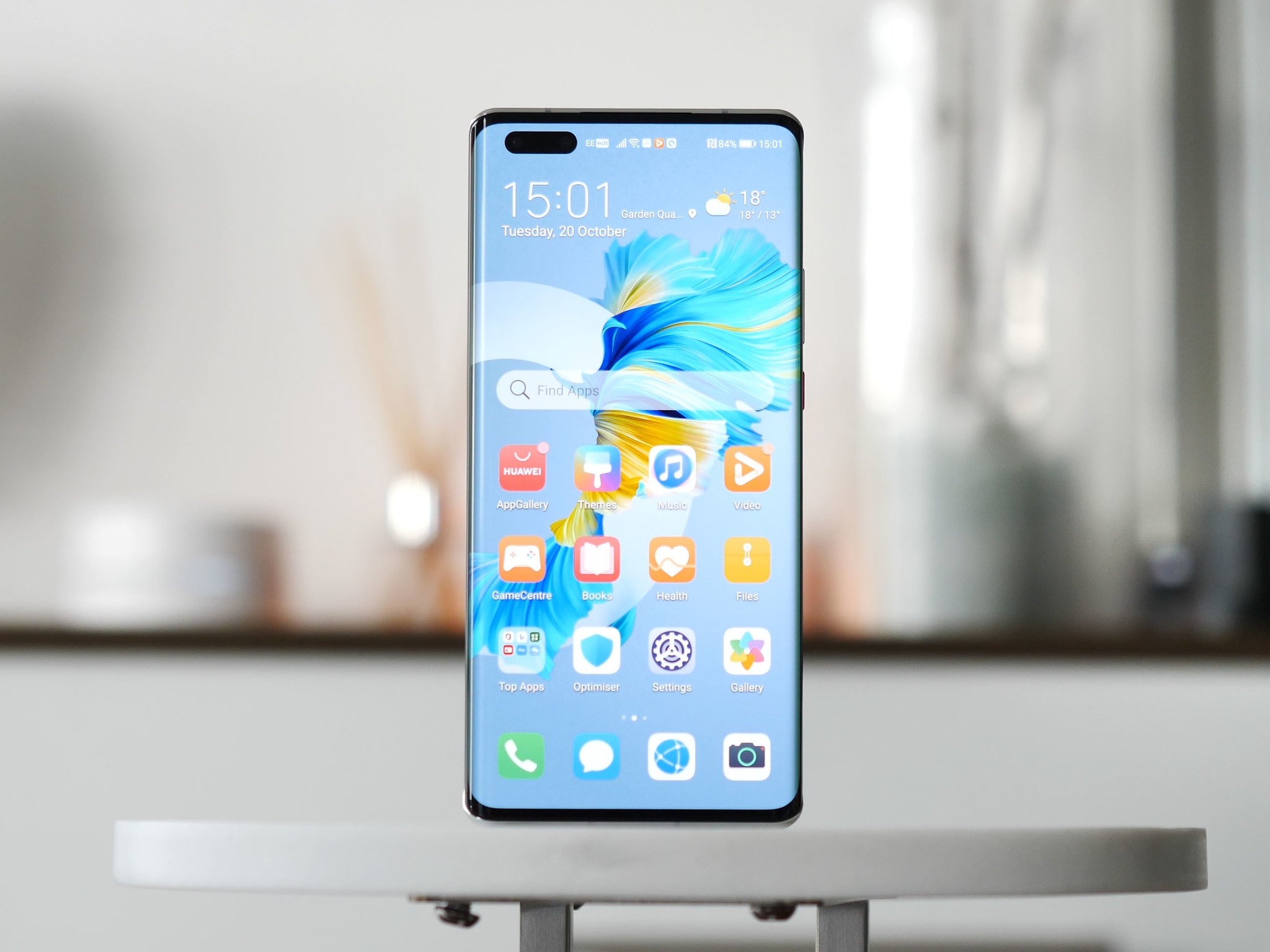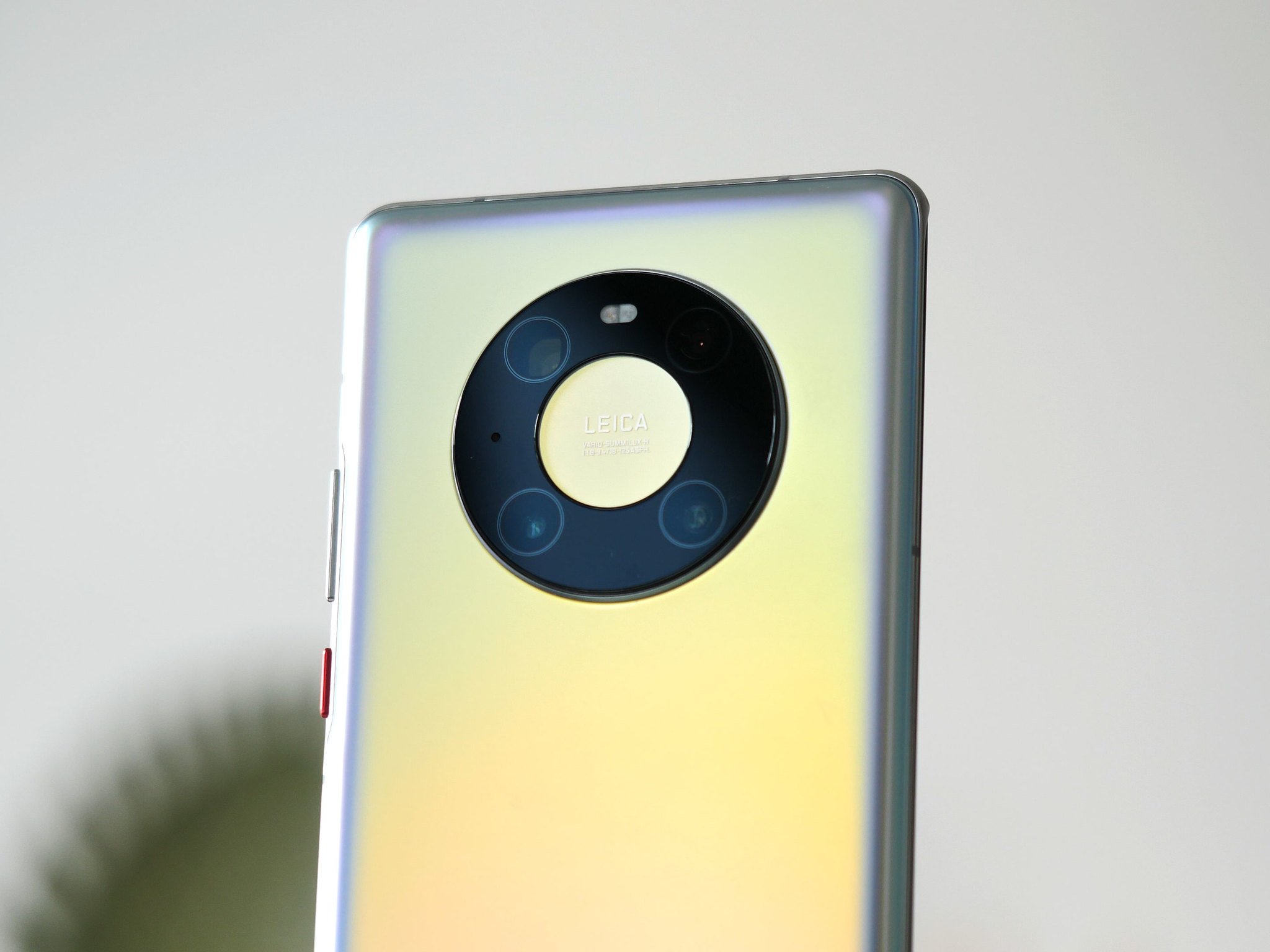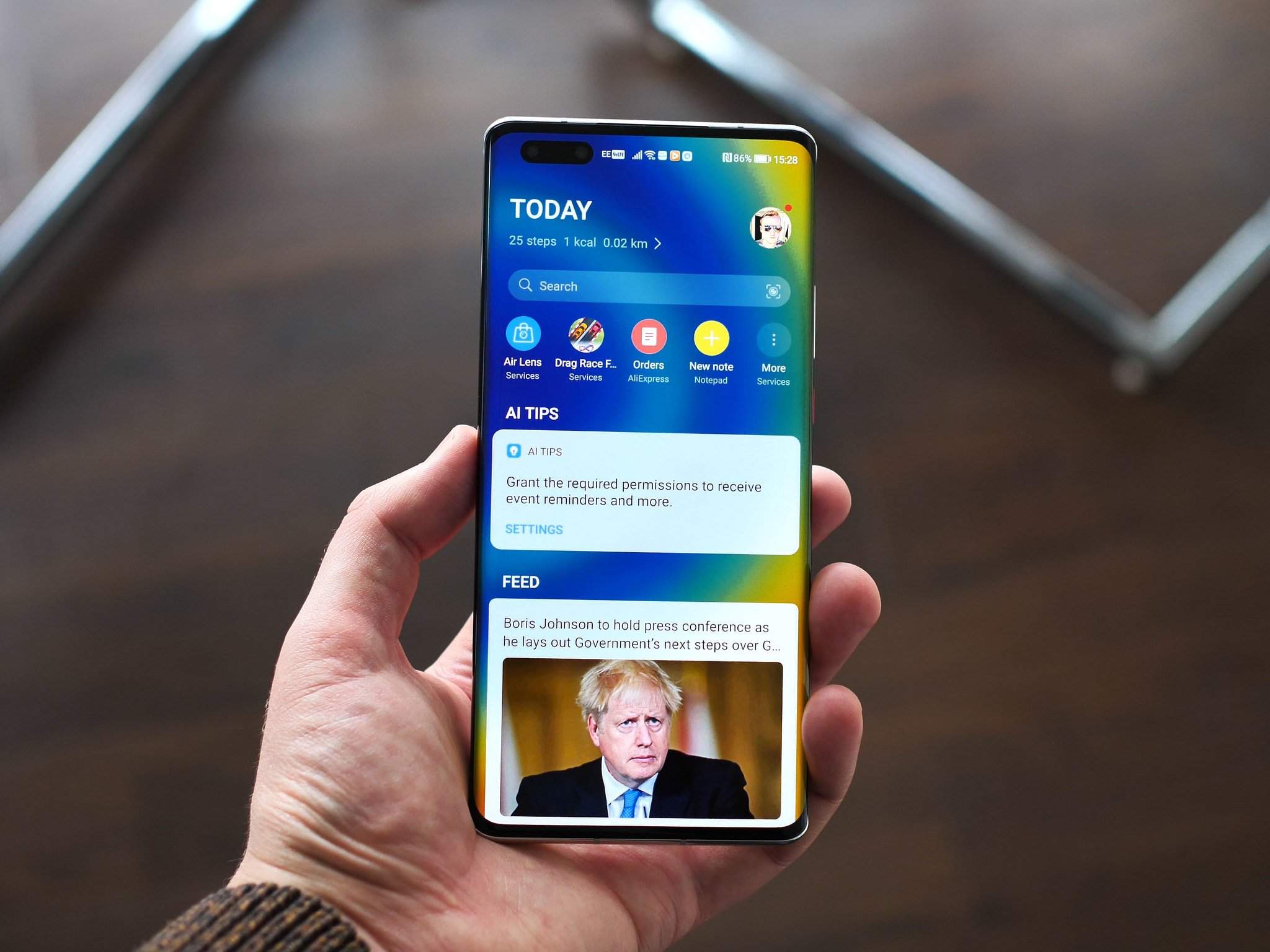Huawei's latest flagship has a stunning waterfall display, 66W wired and 50W wireless charging, and a 5nm chipset.
There are two sides to Huawei's journey in 2020. The Chinese manufacturer is facing increased pushback from foreign governments and the continuing U.S. ban has effectively curbed its global ambitions, but sales in its home market have never been better.
In a way, Huawei was able to offset the loss of sales from global markets by increasing its efforts in China. Along the way, it introduced a new OS that's making its debut on wearables (but could end up powering its phones), and found effective workarounds to increasing restrictions around hardware.
Amidst this backdrop, the manufacturer is launching its latest flagship, the Mate 40 Pro. Like its predecessor, the Mate 40 Pro doesn't have any Google services out of the box, but there's plenty to like on the hardware side of things, including a 5nm Kirin 9000 chipset with an integrated 5G modem, a waterfall OLED display with extreme curves, 66W wired charging, 50W wireless charging, and exciting camera upgrades.
The Mate 40 Pro takes design cues from both its predecessor and the P40 series: you'll find dual cameras at the front, and the camera now goes up to a 120-degree field of view. Huawei is leveraging its AI smarts to automatically increase the field of view when detects a second person in frame.
The Mate 40 Pro has a gorgeous iridescent finish and a waterfall display with 88-degree curves.
The back is where things get interesting. The Mate 40 Pro retains a similar circular camera array as the Mate 30 series, and the new Mystic Silver color option may just be one of the best-looking finishes on a phone this year. The color has an iridescent finish that produces a different color based on the angle and intensity of light hitting its surface, and it definitely makes the Mate 40 Pro stand out.
The Galaxy S20 FE and the Pixel 5 feature pastel designs that are interesting in their own right, but Huawei is going for a more attention-grabbing look with the Mate 40 Pro. Oh, and Huawei says that the "space ring" layout for the camera housing was inspired by the first photo of a black hole, so make of that what you will.
Dominating the front of the Mate 40 Pro is a 6.76-inch OLED display with an FHD+ (2772 x 1344) resolution and 90Hz refresh rate. The interesting part about the screen is that it extends over to the mid-frame at an 88-degree angle, and in a year where most manufacturers have dialed back on extreme curves, Huawei is sticking to this particular trend. The phone also gets stereo sound, with the bottom-mounted primary speaker joined by a secondary speaker located at the top.
The dual cameras at the front feature air gestures — just like the Mate 30 series — but the shift to the hole-punch cutout doesn't take up too much room. There's face unlock by default, and you get an in-screen fingerprint sensor as well. And unlike the Mate 30 series, there's a real volume rocker on the Mate 40 Pro, but you can still use the double-tap-and-swipe gesture on the edge of the screen to change volume if you wish to do so.
The highlight on the Mate 40 Pro is the internal hardware. The phone is the first to feature HiSilicon's latest Kirin 9000 chipset, and it has the distinction of being the world's first 5nm chipset with an integrated 5G modem. While Apple introduced the first 5nm chipset in the A14 Bionic on the new iPad Air and the iPhone 12 series, that particular option uses an external Qualcomm X55 5G modem.
The Mate 40 Pro is the first Android phone to be powered by a 5nm chipset.
With Huawei having to use the Kirin 990 platform for two generations, it will be interesting to see just how much of a performance boost the Kirin 9000 offers in day-to-day use. Huawei is touting significant gains across CPU, GPU, NPU and ISP performance, and until Qualcomm's 5nm Snapdragon 875 chipset makes its way to phones next year, the Kirin 9000 will be the fastest mobile chipset on Android.
The fact that Huawei is offering an integrated 5G modem saves space on the phone and should lead to a more energy-efficient design. Elsewhere, the Mate 40 Pro has 8GB of LPDDR5 RAM and 256GB of UFS 3.1 storage on the base variant, and Huawei is rolling out a 12GB/512GB model as well. The phone comes with Wi-Fi 6, Bluetooth 5.2, NFC, and Huawei's nano memory card slot.
On that front, the Mate 40 Pro has a 4,400mAh battery and offers 66W SuperCharging, with a 66W charger bundled in the box. It's interesting that Huawei is offering 66W fast charging — for those keeping score, that's 1W higher than the 65W SuperVOOC 2.0 tech used by OPPO and licensed to OnePlus as Warp Charge 65 on the OnePlus 8T. Huawei is introducing a new inductive charger that lets lets the Mate 40 Pro hit 50W wireless charging.
A big part of what makes the Mate 40 Pro stand out is the camera technology. The phone features the same 1/1.28-inch, 50MP RYYB sensor as the P40 Pro, but the new ISP on the Kirin 9000 should deliver even better photos. The 50MP sensor holds its own against the best Android phones, and the Mate 30 Pro features a new 20MP wide-angle lens at the back with a 120-degree field of view.
Interestingly, Huawei is adding a 12MP telephoto lens with a periscope setup. The zoom lens can achieve 5x optical zoom, and while it's not as crazy as the 10x zoom factor on the P40 Pro, this is the first time we're seeing a zoom lens of this caliber on a Mate series phone.
Huawei is also making welcome changes for the front camera, with the 13MP primary lens offering the same 120-degree field of view as the sensor at the back. It's great to see Huawei add a wide-angle lens at the front — the only other mainstream phone that has a wide-angle front camera is the OnePlus Nord. There's a secondary time-of-flight sensor at the front, similar to the P40 series.
On the software side of things, the Mate 40 Pro runs EMUI 11 based on Android 10. There's a new "air press" feature that let you answer calls if your hands are preoccupied, an eyes-on display that essentially turns AOD off and enables it again only when you're looking at the device. You also get new AOD customization features, including new animations and GIFs.
The biggest talking point on the software front is the lack of Google services. You'll have to use Huawei's AppGallery to install apps or sideload them, and neither choice is an enticing one. It's unlikely we'll see Google's services return to Huawei's phones anytime soon, and that is a real shame because the hardware on offer with the Mate 40 Pro is truly exciting.
That, in a nutshell, describes Huawei in 2020. The Mate 40 Pro is an outstanding hardware effort, and the phone will undoubtedly sell well in Huawei's home market. But the lack of Google services in global markets puts it at a huge disadvantage over its Android rivals. We'll have more to share on the Mate 40 Pro in the coming weeks, so stay tuned.
Source: androidcentral



